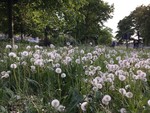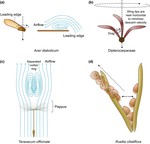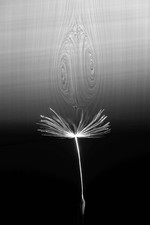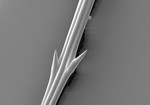 CT scan of a dandelion fruit. Image credit: Cummins et al 2018
CT scan of a dandelion fruit. Image credit: Cummins et al 2018
The dandelion fruit consists of a fruit (the achene), attached to a hairy pappus that aids its flight. This project aims to understand how the structure of the pappus allows it fly so well. Using 3D imaging, flow visualisation and mathematical modelling, the dandelion form and function team have uncovered a new type of vortex. The vortex stably recirculates, while remaining slightly detached from the pappus body. By forming a parachute made largely of empty space, the dandelion can maximise descent time, while minimising the amount of biological tissue required to form the pappus.
Though the fruit of the dandelion flies well in dry, windy weather, the pappus changes shape by closing when it gets wet. This may be a form of informed dispersal to guide dispersal toward wetter environments. We have investigated the changes to the fluid dynamical properties when the pappus closes. Additionally, we are establishing the mechanism behind pappus closure as cell walls swell and expand when moist.





